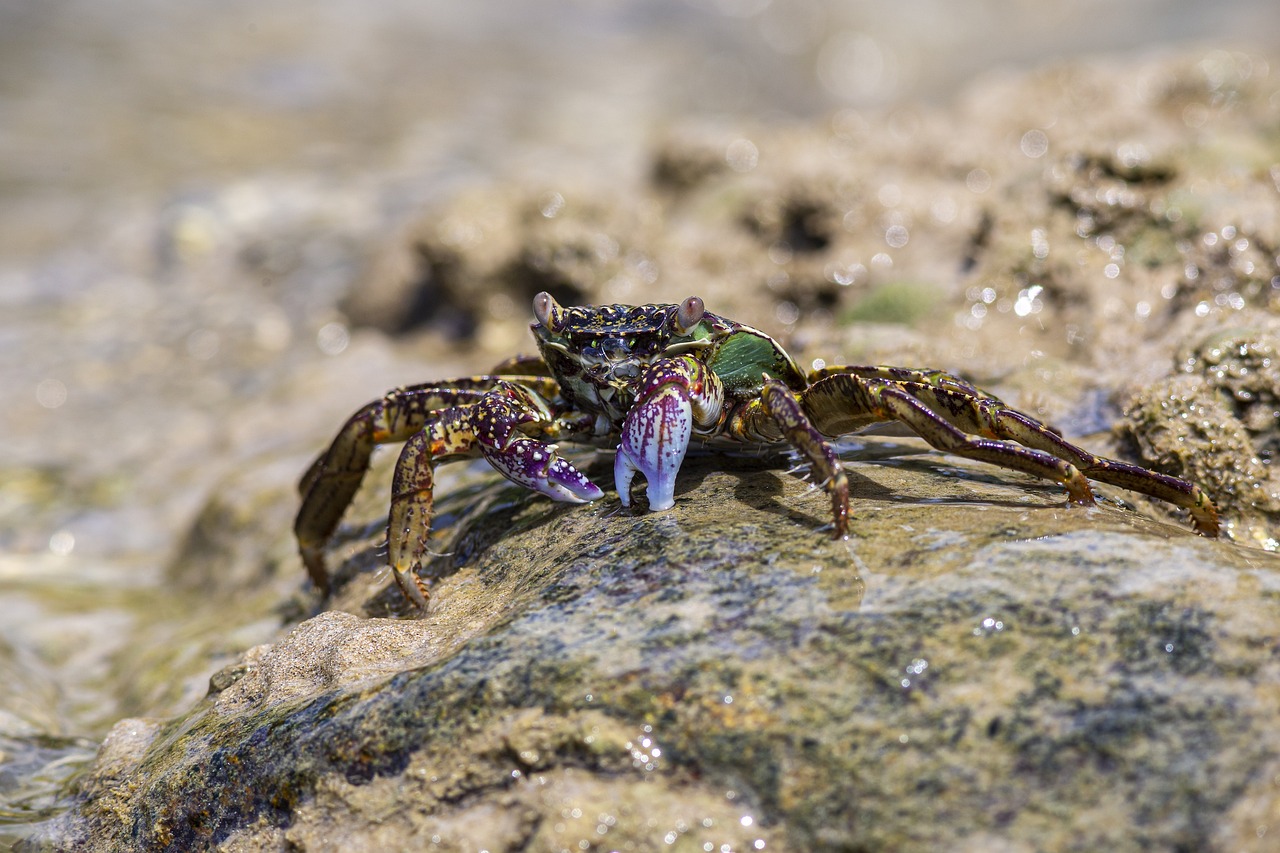The Green Rock Crab, scientifically known as Grapsus fourmanoiri, is a striking species commonly found along rocky coastlines in tropical and subtropical regions, including parts of Thailand. Here’s an overview of this fascinating crab:
Description
- Appearance: The Green Rock Crab has a distinct, flattened body with a carapace that can range from green to brownish-green, often with darker mottled patterns. The legs are long and flat, aiding in swift movement across rocky surfaces.
- Size: These crabs typically have a carapace width of about 5 to 7 centimeters.
Habitat
- Distribution: Grapsus fourmanoiri is found along the rocky coastlines of the Indo-Pacific region, including Thailand. They are well adapted to the intertidal zone.
- Preferred Environment: These crabs are most commonly seen on rocky shores, often near the splash zone where waves crash against the rocks. They can be found in crevices and under rocks where they seek shelter from predators and harsh environmental conditions.
Behavior and Ecology
- Activity: Green Rock Crabs are primarily diurnal, meaning they are active during the day. They are often seen scuttling quickly across rocks, retreating into crevices when approached.
- Diet: They are omnivorous scavengers, feeding on algae, detritus, small invertebrates, and organic matter washed ashore. Their diet helps in maintaining the cleanliness and balance of their coastal habitat.
- Adaptations: Their flattened bodies and strong legs allow them to navigate the rugged, slippery surfaces of rocky shores with ease. They have strong claws used for feeding and defense.
Reproduction
- Mating: These crabs reproduce sexually, with males often engaging in displays to attract females. The reproductive season typically aligns with warmer months.
- Eggs: Females carry fertilized eggs on their abdomen until they hatch. The larvae are then released into the ocean and go through several developmental stages before settling as juvenile crabs.
Conservation
- Threats: Green Rock Crabs face threats from habitat destruction, pollution, and human disturbance. Coastal development and pollution can significantly impact their populations.
- Conservation Efforts: Efforts to protect coastal ecosystems, such as maintaining clean beaches and reducing pollution, are crucial for the preservation of Green Rock Crab populations.
Observing Green Rock Crabs
- Best Times: These crabs are best observed during low tide when they are more likely to be exposed on the rocks.
- Watching Tips: Approach slowly and quietly to avoid startling them. Look for them in crevices, under rocks, and near the splash zone on rocky shores.
Interesting Facts
- Camouflage: Their green coloration and mottled patterns provide excellent camouflage against the algae-covered rocks, making them less visible to predators.
- Speed and Agility: Green Rock Crabs are known for their speed and agility, which they use to escape predators and move efficiently across rocky terrain.
Ecological Role
- Scavengers: By feeding on detritus and organic matter, Green Rock Crabs play a vital role in recycling nutrients and maintaining the health of the coastal ecosystem.
- Prey and Predator: They are both prey for larger animals, such as birds and fish, and predators of smaller marine organisms, thus playing a key role in the food web.
The Green Rock Crab (Grapsus fourmanoiri) is a resilient and adaptable species that contributes significantly to the biodiversity and health of rocky coastal ecosystems. Observing these agile crabs in their natural habitat provides a glimpse into the dynamic and intricate world of intertidal marine life.
Visited 892 times, 2 visit(s) today
Views: 1863
Subscribe to the newsletter:
